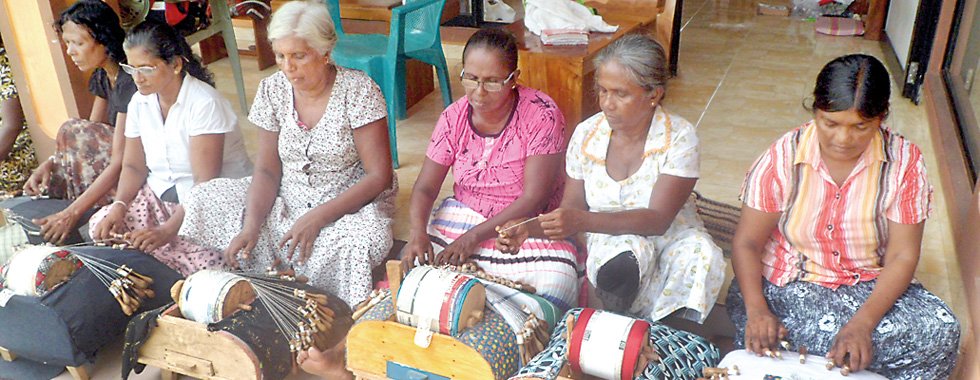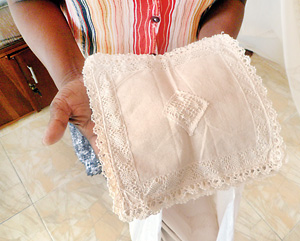Crafting Beeralu Lace
 Beeralu lace making is practiced as a cottage industry in many areas down South with women crafting beeralu lace of intricate patterns. The craft is said to have originated during the Portuguese rule in Sri Lanka when women were taught how to create lace designs to decorate their own attire. Accordingly, every household in the village of Magalle has practiced this livelihood and later during the Dutch period, it spread to other areas such as Weligama and Mirissa in the Southern coast.
Beeralu lace making is practiced as a cottage industry in many areas down South with women crafting beeralu lace of intricate patterns. The craft is said to have originated during the Portuguese rule in Sri Lanka when women were taught how to create lace designs to decorate their own attire. Accordingly, every household in the village of Magalle has practiced this livelihood and later during the Dutch period, it spread to other areas such as Weligama and Mirissa in the Southern coast.
Weaving beeralu lace is a time-consuming task as it requires patience and attention to detail. One mistake, the entire piece will have to be undone. Tools used for crafting include beeralu (wooden bobbins), beeralu kottey (pillow), thread, pins and graph paper. Beeralu kottey is a gadget made of soft wood. Fixed to this is another small pillow known as kotta boley made of wood with a straw or coir padding. The wooden bobbins that hold the thread are called beeralu.
Prior to starting work on the craft, the particular design is drawn on a graph paper. It is then attached to the kotta boley with pins inserted on the entire design. The weaver then takes the thread around the pin manually, using beeralu to form various knots to create the design outlined on the graph paper.
 It is during this process that elegant pieces of beeralu lace take shape. As the crafting continues, the weaver is seen rotating the small pillow (kotta boley) to gather the lace strips around it. The number of beeralu used for weaving varies depending on the pattern, while the threads used for weaving can be white or coloured, or a mix of both.
It is during this process that elegant pieces of beeralu lace take shape. As the crafting continues, the weaver is seen rotating the small pillow (kotta boley) to gather the lace strips around it. The number of beeralu used for weaving varies depending on the pattern, while the threads used for weaving can be white or coloured, or a mix of both.
 Most often beeralu lace is created in long strips and these strips are then attached together to create various items such as table mats, shirt collars, coasters, blouses, etc., as weaving these items straight away can be time consuming.
Most often beeralu lace is created in long strips and these strips are then attached together to create various items such as table mats, shirt collars, coasters, blouses, etc., as weaving these items straight away can be time consuming.
The December 2004 tsunami was a massive blow to the beeralu lace community in the Southern coast as the destruction ultimately resulted in a loss of livelihoods. Many of them were relocated into the interior, from the road front houses they occupied before. As a result, the number of tourists who frequented their home workshops to watch them at work or to purchase their products, fell drastically and this affected their income. Despite these set backs, there are a considerable number of women Down South who still continue this livelihood.


